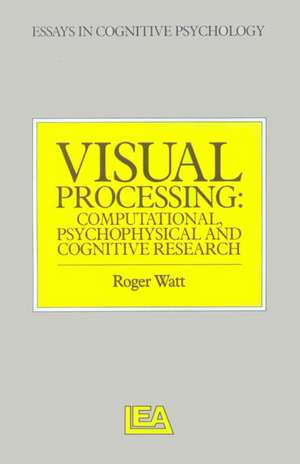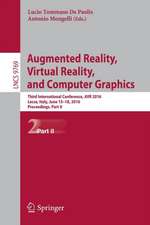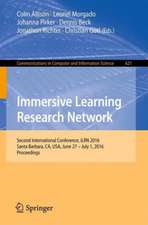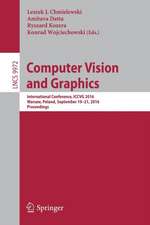Visual Processing: Computational Psychophysical and Cognitive Research
Autor Roger Watten Limba Engleză Paperback – 25 dec 1990
Initially the author considers the computational theory of how the maximum amount of useful information about the scene can be registered from the variations in light intensity in the retinal image. He then goeson to address the question of just what it means to say that the visual system measures spatial aspects of the retinal image, and the consequences of the inevitable distortions that are introduced. He believes that the calculation of spatial position within a distorted metric is not trivial and requires dynamic processes with memory and control. Finally, Dr. Wan argues that the strength of the link between the low-level approaches of psychophysics and computational theory and high-level approaches of cognitive visual function lies in the logic of the arguments that indicate the computational need for control. This Essay will be of great interest to researchers in computer vision, perception, cognitive science and cognitive psychology.
Preț: 408.38 lei
Nou
Puncte Express: 613
Preț estimativ în valută:
78.14€ • 81.76$ • 64.91£
78.14€ • 81.76$ • 64.91£
Carte tipărită la comandă
Livrare economică 03-17 aprilie
Preluare comenzi: 021 569.72.76
Specificații
ISBN-13: 9780863771729
ISBN-10: 0863771726
Pagini: 167
Dimensiuni: 152 x 229 x 11 mm
Greutate: 0.27 kg
Ediția:1
Editura: Taylor & Francis
Colecția Psychology Press
Locul publicării:Oxford, United Kingdom
ISBN-10: 0863771726
Pagini: 167
Dimensiuni: 152 x 229 x 11 mm
Greutate: 0.27 kg
Ediția:1
Editura: Taylor & Francis
Colecția Psychology Press
Locul publicării:Oxford, United Kingdom
Cuprins
Acknowledgements, Preface, 1. Introduction, 2. A Model for the Primal Sketch, 3. Measurements, Metrics and Distortions, 4. Calculating Values for Spatial Position with Grouping, 5. Control of Primal Sketch Processing, 6. Synopsis: Low-Level Vision as an Active Process, References, Indices
Descriere
This highly original and interesting monograph puts forward ideas on visual processing and representation in the early stages of visual perception, and examines the computational requirements of the system and its psychological performance.












